Solutions for radioactively contaminated sites
Remediating while protecting people and the environment: how to do it?
Suppose you own land contaminated with radioactive material. How best to deal with this? What is the risk to people and the environment? Is it best to have this remediated? SCK CEN's nuclear knowledge and expertise come together to provide a total approach in guidance and advice for owners of NORM industries or contaminated sites.
We apply our expertise to various sites and industries where NORM is involved, such as former uranium mines, deep geothermal energy, NORM sites or former landfills. For example, SCK CEN previously worked on characterisation, radiological impact studies and formulating remediation options for Tessenderlo Chemie, the radium production site in Olen, the Curilo mine in Bulgaria and Kyrgyzstan...
-
Materials with an increased content of natural radionuclides are often referred to by the acronym NORM. In full, this stands for Naturally Occurring Radioactive Material. Sites with such materials are then called NORM sites. Industries such as the steel and phosphate industries with NORM materials in finished products or residues are called NORM industries.
Important here is the designation 'increased' content. After all, natural radioactivity is found everywhere.
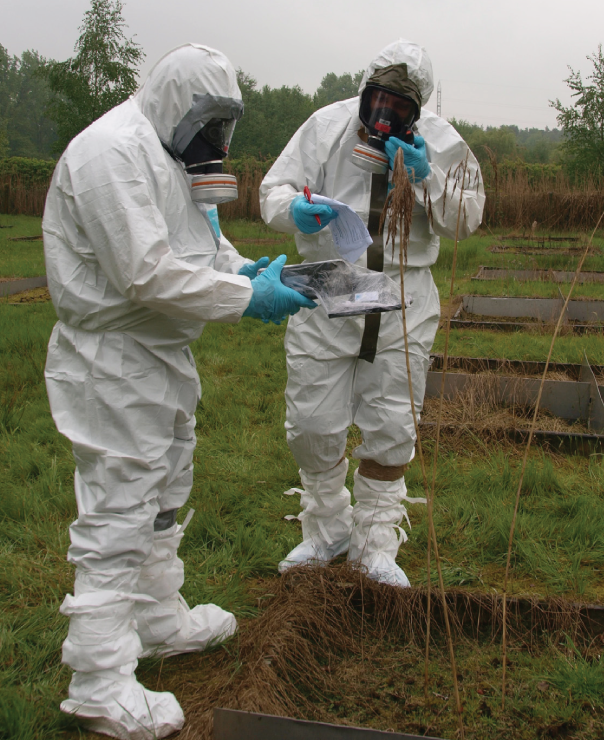
What are the activities of SCK CEN?
SCK CEN is a 'one-stop-shop'* for guidance and advice on radioactively contaminated land:
- We guide owners of NORM industries or contaminated sites in formulating a comprehensive approach to handling materials with elevated contents of natural radionuclides;
- We are a partner in the detection and characterisation of the contaminated site and/or NORM material, in the provision of solutions for dealing with this material, and in the training of employees of the industries concerned;
- We help remediate historically contaminated sites and work together to find long-term solutions that do not harm people and the environment. For this, we rely on more than 70 years of experience in handling radioactive material;
- A central issue here is estimating the radiological impact on people and the environment in order to get it below the legal requirements. We also assist in preparing safety files and license applications.
- We explore circular solutions where we reuse NORM materials within certain industrial applications.
* For the actual execution of the works, SCK CEN relies on partners.
Radioactively contaminated areas: from containment to remediation
The ultimate goal is to protect people and the environment from radiological impact, always following legal guidelines. This involves the remediation of waste piles, debris, contaminated soil on a specific site, as well as its impact on the immediate surroundings, as is the case with landfills, contaminated flood plains or NORM sites.
Total approach to restoration of contaminated sites in 4 phases
We distinguish 4 phases in the remediation of a radioactively contaminated environment. SCK CEN has the expertise and knowledge to act as an advisor-partner in all these phases.
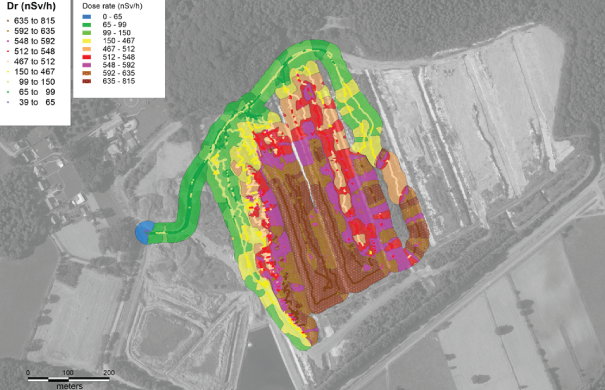
1. Site investigation & characterisation
What are the radiological consequences of a particular activity? In order to properly assess this, SCK CEN investigates and characterises the site and the surrounding environment. The initial contamination at the site is identified by taking direct measurements at the site or by taking both solid and liquid samples of waste materials, soil, water, air, etc. For hard-to-reach areas, a drone can be used for this. We characterise the soil and analyse the nature and amount of radioactive contamination in our accredited laboratories.
The result? A lot of data, which firstly allows you to get a picture of the spatial (three-dimensional) distribution of the contamination, and secondly to develop a conceptual model of the site. The model indicates in detail in what form the contamination is present and how it behaves.
SCK CEN has a lot of experience and knowledge at its disposal to bring this phase of remediation to a successful conclusion. In addition, we are conducting further research on a more sophisticated way to identify potential contamination.
🔗 Lees meer over onze expertise ‘lageradioactiviteitsmetingen’ and 'dosimetry' or see how we map radioactivity using radiation detection drones.
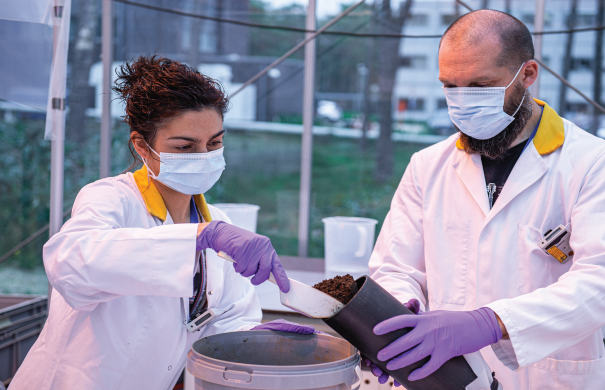
2. Impact studies & environmental impact assessment
Thanks to the conceptual model, we discover the exposure pathways for the personnel still working on the site, for residents in the vicinity, and for the fauna and flora in the area. Moreover, we can use the data and targeted experiments to predict how potential contamination will spread. Will the contamination reach the groundwater? Are plants absorbing pollutants, and does this have an effect on our food chain? How do radioactive particles spread through the air? Using tests and mathematical models, SCK CEN calculates the short-, medium- and long-term consequences of contamination and formulates relevant remediation options.
Did you know that SCK CEN also carried out such studies for the surface disposal of category A waste in Dessel? Commissioned by ONDRAF/NIRAS, we examined the various short- and long-term scenarios, including models that mapped the impact on the surroundings and the biosphere. Want to know more?
Want to know more? Click through to ONDRAF/NIRAS.
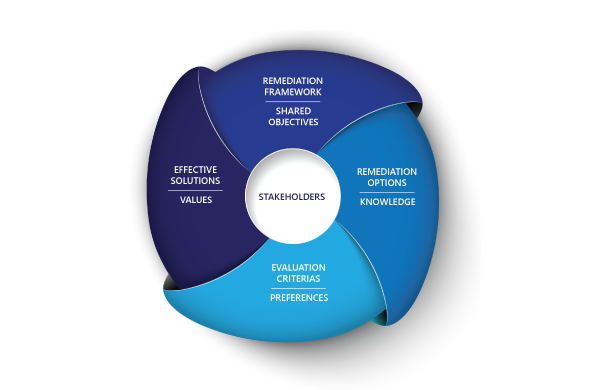
3. Selection and optimisation of remediation options
Is remediation necessary? If so, there are often several remediation options available:
- Removing the contamination, for example by excavation, physical soil clean-up... SCK CEN is also investigating bacteria or plants can be used to remove contamination.
- Changing the mobility of the contamination, for example with chemical treatment, reactive barriers...
- Applying impermeable or low-permeability barriers around the contamination, for example with a cover, diversion...
- Changing the land use, for example by introducing restrictions.
Which option is best? In that choice, you need to consider not only the short- and long-term radiation effects on people and the environment, but also the implementation costs and technical feasibility. What constraints does the location bring? Will the site be used for other activities during remediation? What about the costs of storage and/or disposal of the waste? The time frame in which the work must be completed and the opinion of the public and other stakeholders also influence the remediation plan.
Nuclear applications are not only a matter of technology, but also of societal choices. SCK CEN is strongly committed to citizen participation and keeps its finger on the pulse of the general public. How? You can read about it here
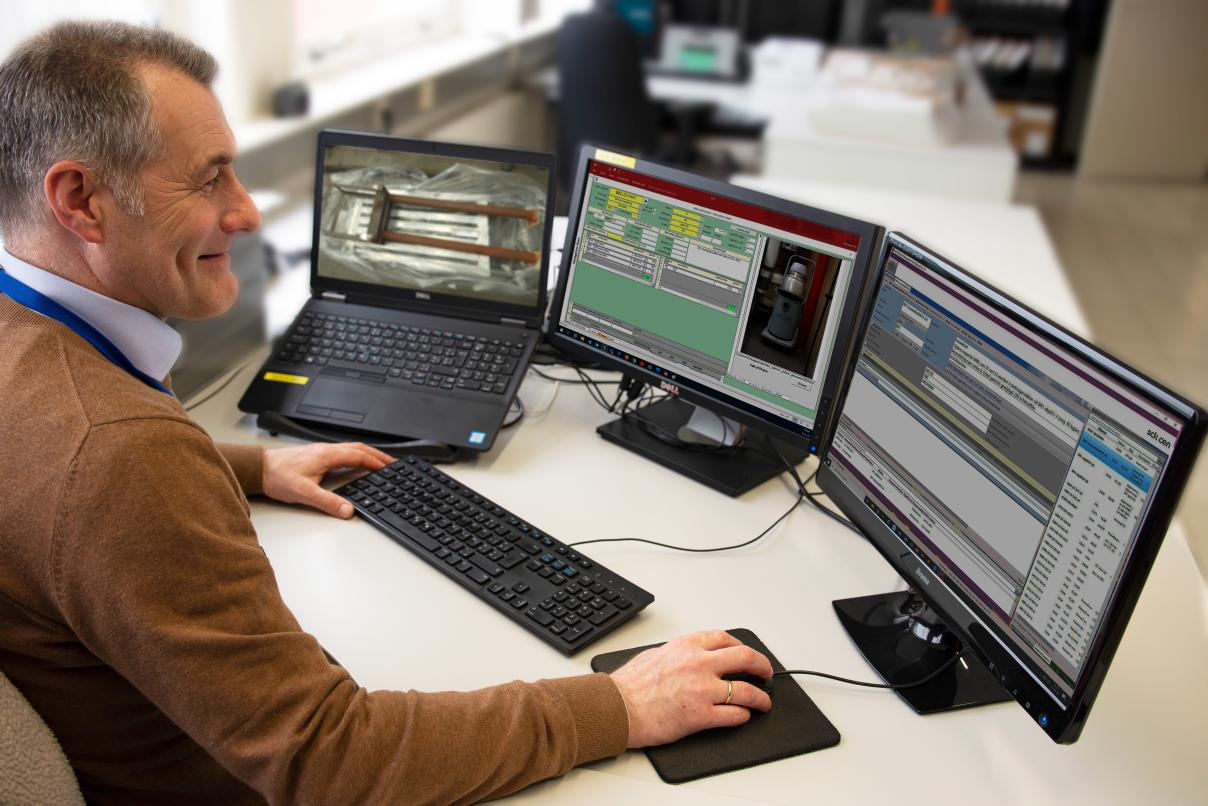
4. Planning and demonstrating the success of the remediation
In the planning phase, we link health and safety aspects, environmental impacts and waste management to the remediation process. For the actual execution of the works, SCK CEN relies on partners.
Upon completion of the remediation, it must be demonstrated that the goal has been achieved. This will require new measurements, possibly supplemented by new calculations, and possibly monitoring for a period after remediation. You need to keep records of what was done exactly where, what type and amount of waste was removed and where it was taken.
In addition to on-site and off-site monitoring capabilities, SCK CEN also offers digital systems or models that ensure the traceability and transparency of the remediation works and the associated decision-making processes. Think, for instance, of a document management system, procedures for impact calculations, GIS for spatial data... Interested? business [at] sckcen [dot] be (Let us know!)